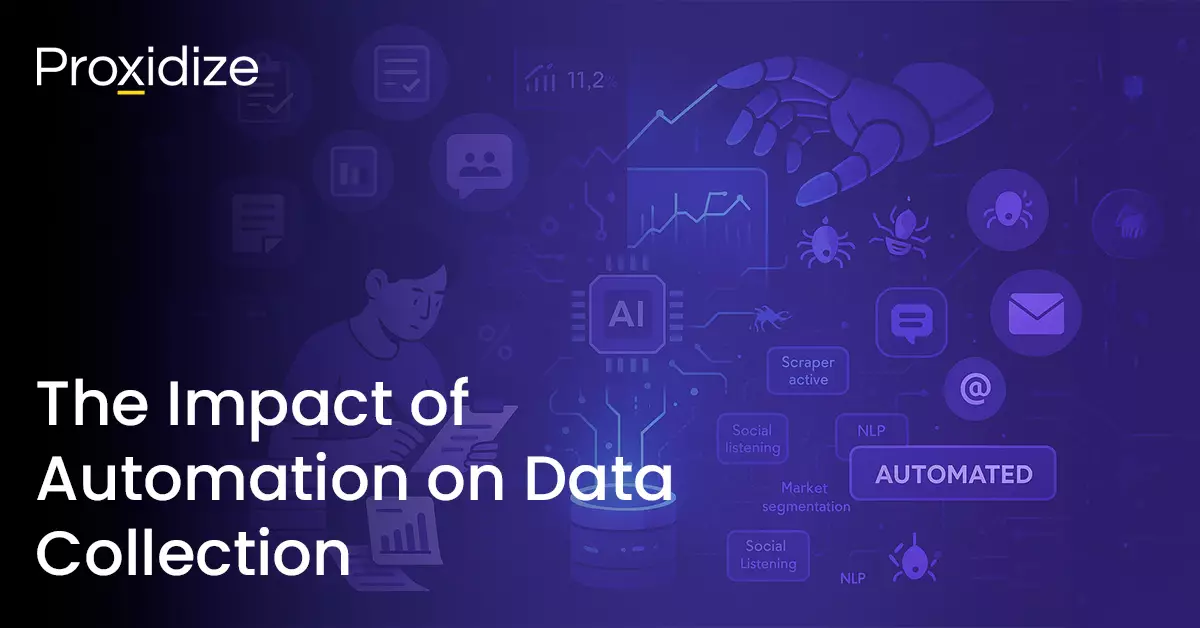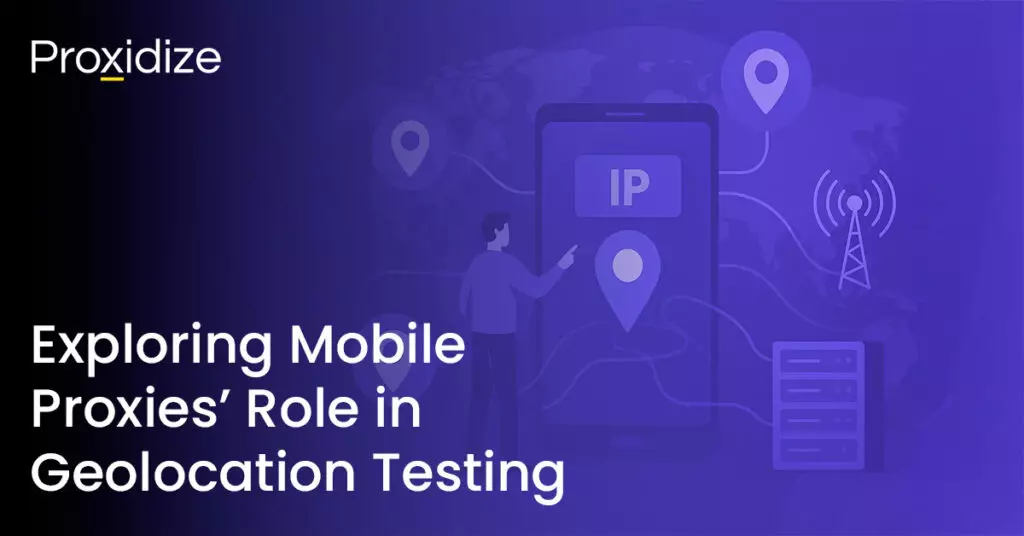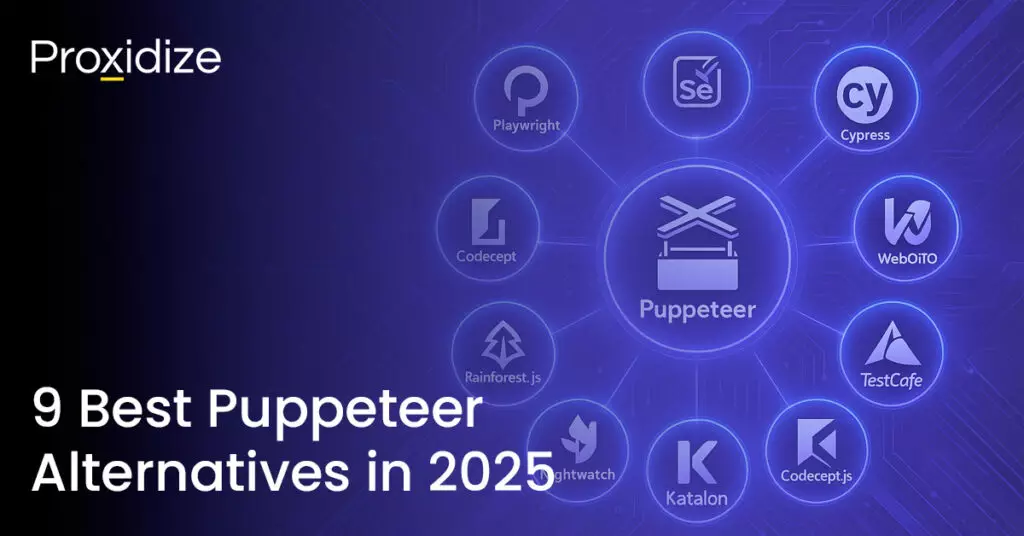Data collection is a fundamental aspect of market research, serving as the foundation for insights that drive strategic business decisions. This process involves gathering, analyzing, and interpreting information that helps companies understand their target audience, assess competitive dynamics, and identify market trends. Over the years, the evolution of technology has revolutionized the methods available for data collection in market research. This article explores how data collection has evolved, the impact of automation on data collection, and doing so assists modern-day marketers in ensuring a more efficient strategy.
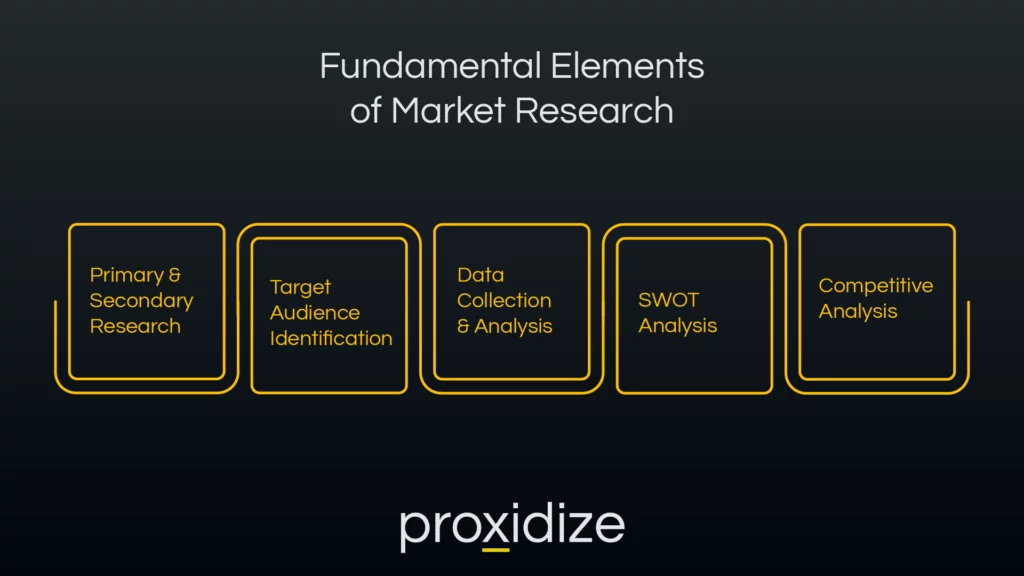
Introduction to Market Research
Market research involves businesses understanding their target markets, customers, and competitive landscape. The process involves gathering, analyzing, and interpreting information to help companies make informed decisions about product development, marketing, and business strategies.
Market research is made up of some fundamental elements which include:
- Primary & Secondary Research
- Target Audience Identification
- Data Collection and Analysis
- SWOT (Strengths, Weaknesses, Opportunities, Threats)
- Competitive Analysis
Market research heavily relies on data collection through various methods. These methods have evolved significantly with the age of the internet. While the same methodologies and general purposes remained the same, the internet has allowed them to go beyond their previous capabilities and have built easier and more efficient ways to extract the data collected and utilize it within the research to get more accurate and worthy results.
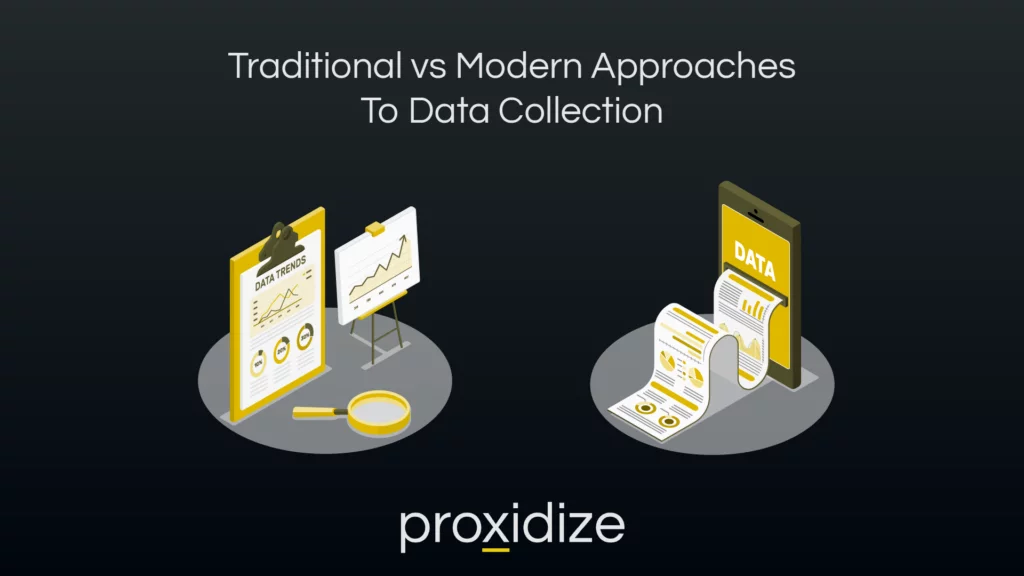
Traditional vs Modern Approaches
Data collection as a concept has existed for centuries. However, in the last few decades, the approaches to gathering data have evolved while maintaining the same basic purpose. In the past, customers would have to willingly provide information about themselves and their opinions which would need to be collected by marketers and collated into a useful document. Furthermore, marketers were unable to tell if their campaigns were successful aside from a rise in sales.
In the modern age of the internet, customers are providing valuable information that they might not even be aware they are submitting thanks to mobile devices which are centralizing all of a customer’s data. This gives marketers a more detailed and accurate understanding of their customer base, allowing them to advertise to them more effectively.
Automating the data collection process has deeply impacted various sectors, including nonprofit organizations. By leveraging tools like Google Analytics and AI-driven chatbots, these organizations can streamline their operations and marketing strategies more effectively. If you’re interested in exploring how nonprofits are optimizing their outreach efforts through automation, check out this detailed guide on how to automate nonprofit marketing.
In contrast to their predecessors, modern-day marketers have a stronger handle on the effectiveness of their campaigns as they can track the exact conversion rates of their customers as an increase in sales could be directly correlated to their advertisements as customers click on ads or emails to make their purchases. These technological advancements could have only been dreamed about by classic marketers and are now at the forefront of research opportunities.

Comparing Traditional and Modern Collection Methods
The differences in the classic and modern age of data collection remain similar with only the efficiency of the collection being advanced and simplified. Here are a few examples of some methods that evolved from traditional to modern while also listing some new-age strategies:
Traditional:
- Surveys have evolved from standing outside and sending mail to sending emails and embedding them onto applications and websites.
- Customer feedback forms would be given out to fill inside the store but have now been sent out in emails.
- Geographical analysis was based on the multiple store locations, however, with mobile phones and e-commerce, customers are ordering online and having their packages sent internationally even which provides a diverse pool of customer information.
Modern:
- A/B testing has provided marketers with the ability to test two different versions of ads and check the conversion rates between the two before deciding on the most successful one to continue the campaign with.
- Social media introduces marketers to a vast environment of customer sentiments as they post reactions and comments about their favorite products.
- Customer relationship management systems have evolved the overall process of managing customer data.
Delving further into detail, surveys have existed throughout both timeframes but have evolved in their practices. Surveys in the past would need to be handed out to customers with the hope they would answer them honestly and hand them back in time for the analysis to take place. Even if they were handed in time, marketers would need to spend time going through the documents and finding out what is useful to them. In the modern age, these surveys can be sent through websites or embedded within websites and can be done by customers easily and quickly. After which, the data will be collated automatically by a program and give marketers the data they need instantly while also allowing them to account for a margin of error.
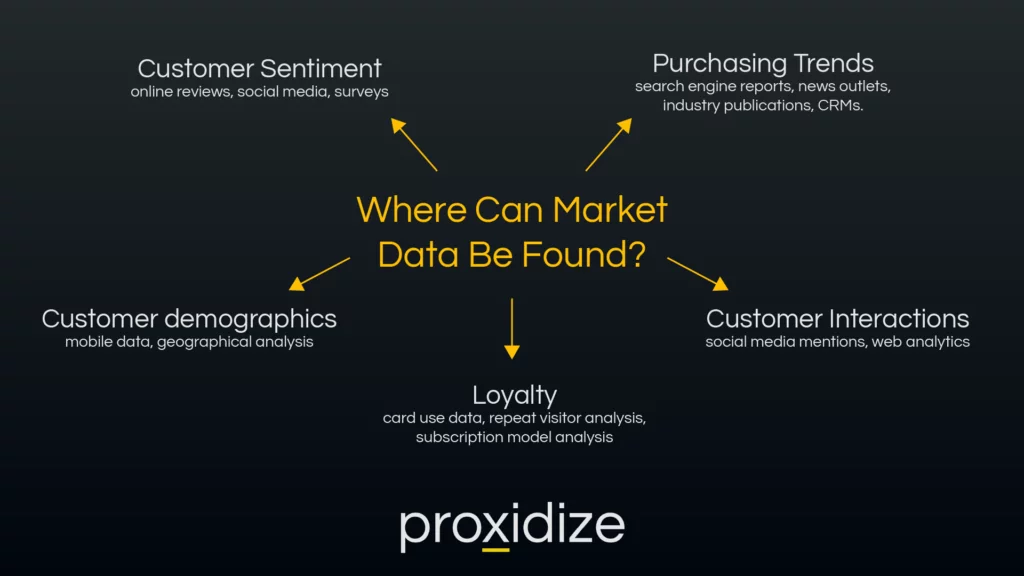
Where Can The Data Be Found?
With the differences between traditional and modern data laid out, it is time to explore where the specific aspects of this data can be found.
- Customer sentiment: Online reviews, social media, surveys.
- Purchasing trends: Search engine reports, news outlets, industry publications, CRMs.
- Customer demographics: Mobile data, geographical analysis.
- Customer interactions: Social media mentions, web analytics.
- Loyalty: Card use data, repeat visitor analysis, subscription model analysis.
With the data in hand, automating it becomes a valuable practice to get the most out of the pools of data gathered. However, not all data collected is easily automated. While some hard data such as percentages of CTRs and conversations are easily understandable and automated, sentimental data could be challenging as automating every mention of a brand or product would result in far too much information with most of it being unnecessary. This is why when automating the data, certain practices must be taken such as supplying an AI with the correct algorithms to only collect the sentiments that matter. Afterwards, human review will need to be used to ensure only the most relevant sentiments are being utilized.
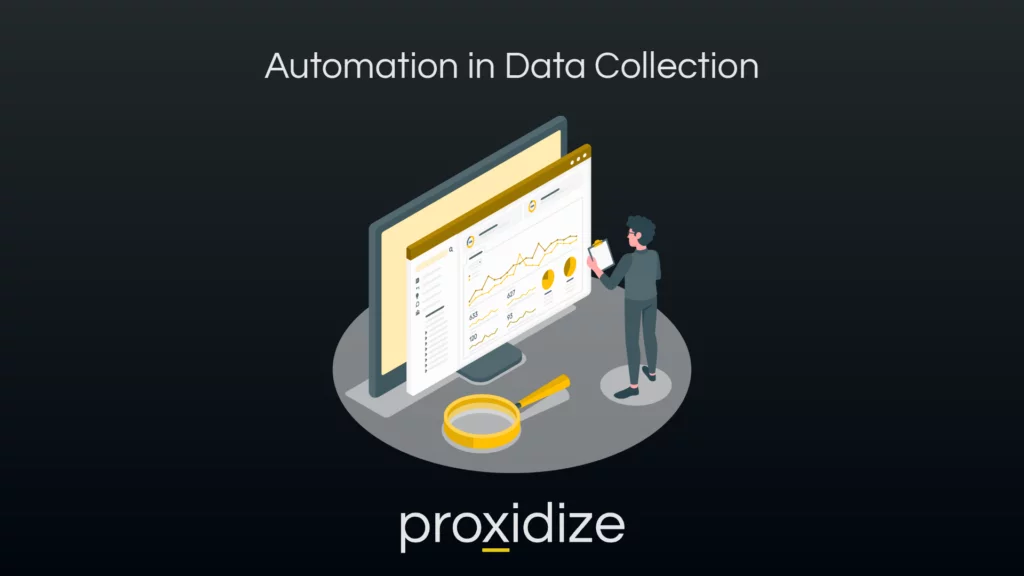
Automation in Data Collection
Knowing what the data is and how to find it is only half the challenge. Automating the data has become the primary goal of many marketers. Automating the data collection process would help save hours that were not a privilege given to the early-day marketers who would have to sift through all the data by hand and figure out what is useful and what is unnecessary.
There are many platforms online that can assist with automation while also being a great help with data collection. A few of these popular platforms include Google Analytics and Facebook Ads Manager as well as other website-specific ad management tools. These tools can provide detailed insights into the performance of the ads posted on the sites. For a detailed example, let us explore what Google Analytics can provide for marketers.
The tool can provide detailed insights into how customers interact with the ad including time spent on the ads and how many conversions occur through the CTR. It can provide recommendations for better strategies to improve ROI through the website’s machine-learning algorithms. The tool can be integrated with Google’s various other marketing tools to give an in-depth analysis of advertisements, making it capable of showing marketers all the data necessary to improve their strategies and figure out what works and what does not.
While using third-party tools could be a great help for marketers, they could automate the process themselves by web scraping. With web scraping, marketers can assign a program that can scrape all the reviews and mentions on social media to speed up their data collection efforts and save them the time they would spend scrolling through websites to find all the data they need. With scraping, marketers can easily make their way through competitors’ websites. Doing so could be risky as if a competitor figures out that they are being scraped, they would instantly ban them. This is why it is best recommended to use a proxy server when web scraping which would enhance anonymity.
Another innovative way to utilize web scraping is by introducing artificial intelligence. Using AI to interpret to changing website layouts and will take care of the scraping processes, allowing marketers the freedom to gather the data without being great at scraping.
Utilizing AI is not limited to web scraping as it has other use cases when collecting data. Equipping AI with natural language processing (NLP) capabilities can automatically analyze data from social media, customer feedback, forums, and news articles to understand, interpret, and categorize sentiments and topics. This provides valuable insights into customer attitudes and market trends. This process not only automates the collection of qualitative data but also transforms it into quantifiable metrics that are easier to analyze.
AI could be a great help when used within chatbots on websites as it can help with automating the process. They can interact with customers in real-time on websites, apps, and other messaging platforms to collect feedback, answer queries, and follow up with additional questions. This interaction will provide a rich source of data that could be used within the overall marketing strategy as it would give a more personal outlook on what current customers are saying.
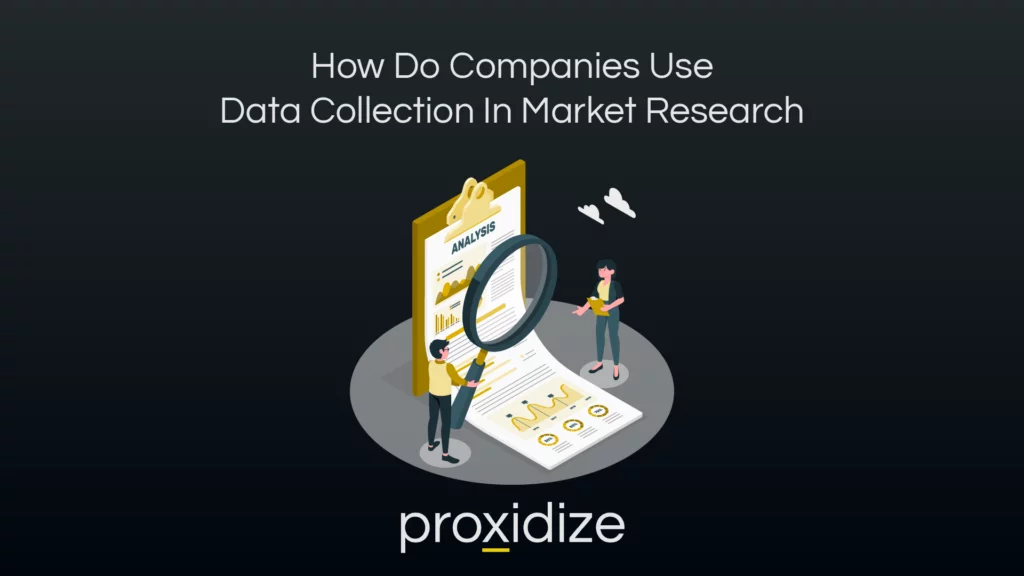
How Do Companies Use Data Collection In Market Research
Data collection is valuable for companies of every size but the extent to which companies are able to target customers changes. A larger company has an advantage as they will most likely be in control of every aspect of the supply chain from creating the product to selling it to advertising it and so they have their hands on all the data from the entire ladder of production. They are also able to advertise to a larger target demographic with a more dynamic range.
Smaller companies do not have this advantage as they would most likely be selling their products on third-party websites which would limit their data pool when trying to do product-related research. Smaller companies are equally less likely to have massive teams of marketers or budgets to spend on mass advertising to as many demographics as they can. As such, they would most likely be able to only advertise to a specific group of people which does not necessarily mean a negative thing as it would work toward building a dedicated customer base.
Conclusion
Automating the data collection process has assisted in the evolution of data collection for market research as it takes the practices of the past and advances them to a degree that classic marketers have only dreamed about. It assists in giving marketers a more detailed and condensed view of the necessary data they need to build a competitive marketing campaign, placing them in the eyes of their target demographic and allowing them to expand to new markets.


